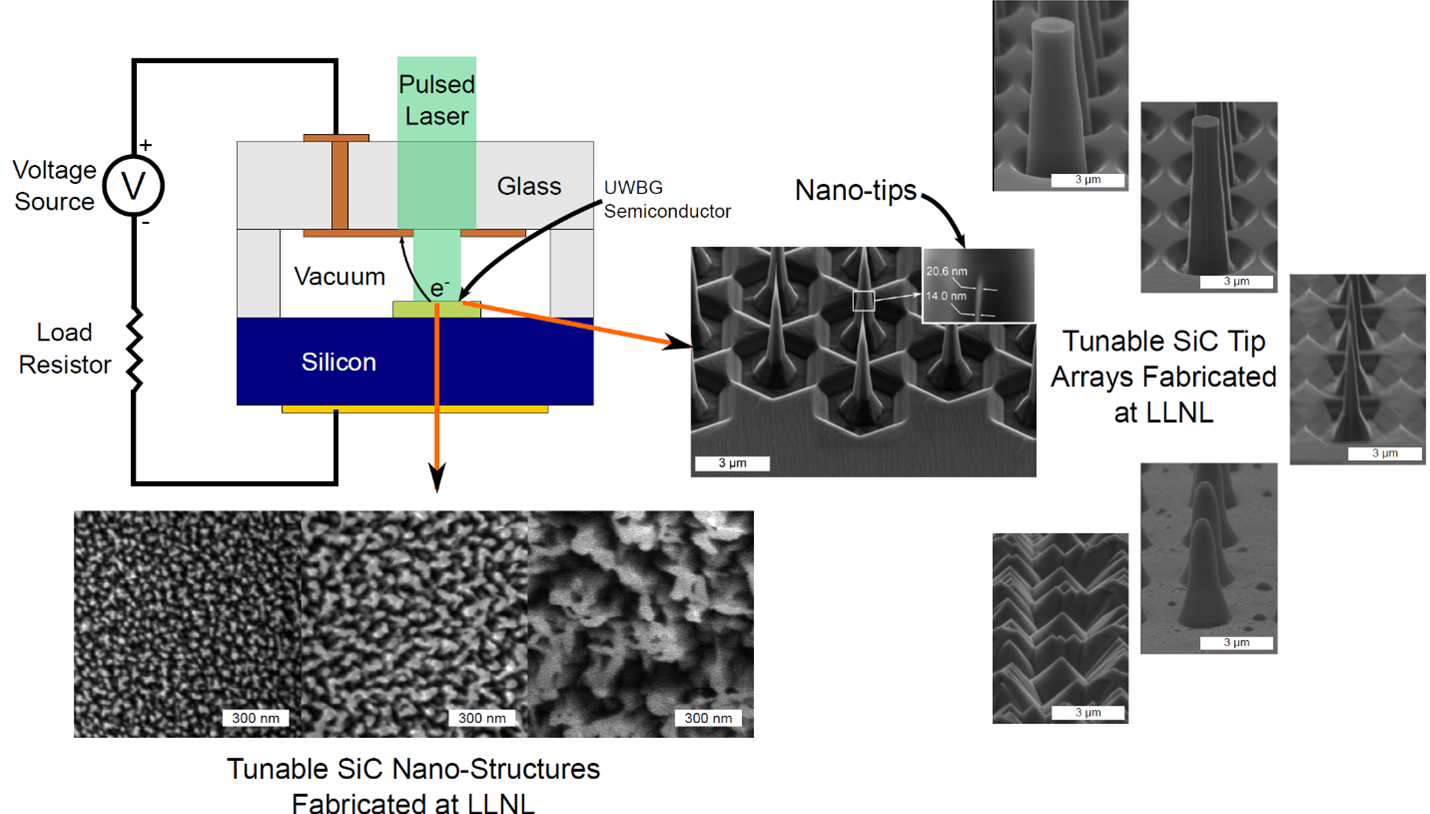Photocathodes convert light into electrons using the photoelectric effect. They are important in accelerator physics, where they generate electron beams as particle sources. The traditional technology used is vacuum electronic devices (VED). Vacuum microelectronics have the potential to outperform silicon microelectronics by six orders of magnitude in high-power and high-frequency applications where new opportunities could be unlocked in radar, high-frequency wireless telecommunications, compact X-ray generation, and pulsed power. To realize these gains, however, the conventional vacuum tube must be shrunk to the size of a microchip and not require a hot cathode. What is needed is the development of a reliable and addressable high-current cold cathode electron source.
LLNL researchers faced this challenge by bridging the gap between VEDs and solid-state electronics (SSE). Their approach was to create a hybrid vacuum microelectronic device (VMD) architecture that combines the properties of vacuum as the electronic medium and the compact form factor and manufacturing scalability of semiconductor microelectronic chips. Their invention has two major components: (1) the core of the invention is the UWBG field-emission photocathode, and (2) the general device architecture for a micro-vacuum device enabled by and employing the first part.
LLNL has a huge portfolio of UWBG-based photoconductive semiconductor switches (e.g. U.S. Patent No. 10530362 Total Internal Reflection Photoconductive Switch published 1/7/2020) and the know-how to fabricate UWBG devices.
LLNL’s UWBG field-emission photocathode has the potential to have vacuum electronics performance at microchip sizes and costs.
- Optimal Size, Weight, and Power (SWaP) form factor
- Fast pulse rates compared to vacuum tubes
- Eliminates parasitic current leakage
- High power high frequency applications
- Radar
- Particle accelerators
- Pulse Power devices
- Electron sources
Current stage of technology development: TRL 3 (analytical and experimental critical function and/or characteristic proof of concept)
LLNL has a huge portfolio of UWBG-based photoconductive semiconductor switches (e.g. U.S. Patent No. 10,530,362 Total internal reflection photoconductive switch published 1/7/2020 https://image-ppubs.uspto.gov/dirsearch-public/print/downloadPdf/10530362) and the know-how to fabricate UWBG devices.


